Stan Getz and Charlie Byrd, Jazz Samba (Speakers Corner re-issue of Verve VG-8432). Getz made this record during the first wave of popularity of Brazilian music in the US. Speakers Corner did a superb job of remastering. The sound is warm and intimate with no transistor-y side effects. The layout is simple: a guitar, tenor sax, bass and drums. The sound is really quite pleasant. I hadn’t heard this in years, though, and must confess to finding the playing in general, particularly that of Charlie Byrd, out of their element.
The Anna emphasized the shear sensuousness of the recording, almost succeeding. There were some excellent moments in which the guitar, especially, sounded intimate and ear-tickling; however, you can’t make a silk purse out of a pig’s ear, or something like that, but the Anna came close.
Chris Connor, This is Chris (Bethlehem BCP20 mono). My collector buddy who brought this over has been through multiple copies of this gem and this very early edition is by far the best. Connor’s voice sounded particularly “in the box” this evening; she’s a sexy but strong-sounding woman, with an attractive, quick vibrato. The Anna handles this first-rate mono recording superbly. There is the usual “can’t be mono” great mid-50s sound, with a clearly audible soundstage, left to right and front and back, great musicality, and warmth — a real keeper.
Anthony Williams, Spring (Blue Note 84216, Japanese reissue BNJ-71075). This somewhat legendary Tony Williams Blue Note outing came about while Williams was playing in the second Miles Davis Quintet in the mid-to-late 60s. He is joined by his Quintet colleagues Wayne Shorter and Herbie Hancock, with Gary Peacock on bass and Sam Rivers on second tenor. It is an absolutely virtuoso endeavor with each musician playing at the top of their game. And as a result, the recording is exceptional, a great Blue Note.
However, it is almost entirely free jazz and will annoy many who listen to it. Yet the sound is so good, particularly on this Japanese re-issue, that I find myself returning to it with real pleasure. The Anna brings out everything I would hope for. For example, the second cut on the first side is nothing but a drum solo. Long drum solos are not the real meat and potatoes of most listeners, yet Tony Williams is so . . . interesting. He can get so many different sounds out of a drum kit that I find myself in no hurry for him to stop.
The Anna brings out every nuance in exceptional detail without sounding remotely abrasive or hard, atop a beautiful rendering of the toms and cymbals, especially. This cartridge is particularly good at capturing dynamic shadings. Same with the saxophones: all the detail right down to the mouthpiece buzz. As with most Blue Notes, the cymbals are slightly dry and there may be a hair of roll-off, but that won’t bother all the listeners at your next birthday party. Just let it play.
Once again, the soundstage was wide with an almost holographic recreation of the instruments. There was tangible space and air surrounding each instrument while the entire ensemble was surrounded by the acoustic of the venue. Depth was good. With the right source material, this cartridge excels at creating dense three-dimensional images. I would not be surprised if this comes as a result of its ability to mine the grooves for information. I am not sure that I have ever owned a cartridge that recovered/resolved this level of detail.
Paavo Berglund, Bournemouth Symphony, Sibelius Complete Symphonies (, Symphony No.3). The recording is up-front but well spread out across the soundstage. There is every opportunity for the strings to come across in an abrasive fashion, but they don’t, even when the players are digging in (though they always do so with control and restraint, thanks to Berglund’s deft hand at the helm). When the basses pluck away in the right rear, we know exactly where they are.
In the second movement, the flute duets and the pizzicato strings are just lovely and well placed on the soundstage. There is a coiled tension to this account that is beautifully conveyed. I had not been as completely aware of it in previous listens and I can’t account for it, except as a product of the remarkable detail.
So, there is almost everything one could want in an experience with the reproduction of a musical event. I would only note one minor quibble, one that is no doubt a part of the recording, and that being a slight dryness to the sound (dryness, as opposed to color . . . yet that is difficult to define or explain). I can say that we would likely hear something different with, for example, a Koetsu. More instrumental color perhaps, but less in the way of subtle rhythmic and emotive cues? And what would a similar Lyra do? Something in between? I’m not sure. But what I can say is that what I am hearing is extremely gratifying and musically satisfying. If I had scads of money, I might prefer to have a turntable outfitted with multiple arms and all three cartridges. The Anna is doing a great job of engaging me in the musical moment, right now. The clarity of the emotional cues alone is ear-opening. It is this sort of experience that causes reviewing equipment to be ultimately worthwhile.
Louis Armstrong meets Oscar Peterson (Verve MGV-8322, Analog Productions re-issue). I was somewhat puzzled at Chad Kassem’s decision to release Armstrong and Peterson’s collaboration from Verve in Analogue Sounds most recent series (or non-series) of many excellent releases from various labels. This is late-career Armstrong, which was not considered his best by the cognoscenti in my own younger days. That having been said, with the superb mastering and pressing we end up with a record that made the Anna very happy here, and thus makes us listeners happy as well. The soundstage is as wide as one could hope, placement of instruments is very clear, and they come across as clean as one could wish.
Armstrong’s voice is, well, what it is. Yet he comes across with warmth and engagement in his studious, casual way, and he is captured front and center with great detail, but not clinically. The most fun are his too infrequent trumpet solos. The guy has a big and magnificent voice via his trumpet, a voice that spoke with great authority, even in his later years. In sum, in this instance, the Anna seemed to disappear and let the music speak — and speak at its best. If I sometimes felt that the Anna could lean toward the slightly cool side of neutral, this was not one of them.
Helen Merrill, The Nearness of You (EmArcy (Mercury), EXPR-1018). This is a Japanese reissue of one of Helen Merrill’s 1950s mono EmArcy LPs; the reissue dates from the late 70s – early 80s. The surfaces are exemplary. I’ve no idea what generation masters the Japanese were working from, but Merrill’s voice has considerable presence and detail, so I would guess they were not far from first generation. Merrill had an appreciative audience in Japan, and lived there for several years in the 60s and 70s.
Although mono, this recording gives us a very good impression of the space around the instruments and Merrill’s voice, as well as a sense of depth and placement. The Anna renders the music easy to listen to and it seems to really get out of the way, once again. I asked myself, what do I wish it could do that it isn’t doing? On this record, not much. Maybe if it could give Merrill’s voice just a touch more chest, a bit more honey. Yet my sense is that it is giving us what’s on the record. Most important, the slight sensual hoarseness that Merrill exploited so well in her younger years is entirely with us and that does most of what needs doing. As far as the instruments go, well, it sounds like a very good 50s recording. Plenty of bass, reasonable highs, and reasonable detail. No complaints. Just good listening.
Sir Lennox Berkeley, Serenade for Strings, Opus 12 (Lyrita SRCS 74). This is a Decca-pressed Lyrita, which gives us the best of an already good recording. I was particularly interested to hear the Serenade for Strings. My experience has been that recordings of smaller string-only orchestras offer all kinds of possibilities for mischief, be it on the part of the recording engineers or during the mastering process or, most importantly, this evening in playback. I know this recording! It can sound slightly, or more than slightly glassy if imperfectly reproduced. The glassiness in general can be really annoying when it happens, and has led me to ditch equipment before. No surprise, this has come up in more than a few digital circumstances.
I am happy to report that, if one were uncertain what I might mean by the admittedly non-technical term “glassy,” the Anna would be of no use in clarifying the situation. I noticed virtually no glassiness. The sound was excellent. The string orchestra was spread out somewhat beyond the speakers, and the placement of the sections was, indeed, more crystalline than I believe I’ve ever heard. In the loudest moments, I heard the slightest edge of distortion in the mass of upper strings . . . sometimes. That tends to bother the hell out of me, and I’ve done a lot with the system to eliminate that problem. Violins, pressed to play loud and hard, just do that to microphones or other components sometimes. The next piece on the same side was full orchestra and did not have that problem. So, I have no reason to believe that it originated with the Anna. In fact, the Anna did the best job with this record that I can recall (I use it as a test record for a reason — it’s a tough nut to crack and I like the music). With the Anna, I enjoyed the music and was able to ignore the imperfections of the recording, and it was the least glassy that I’ve heard it.
Quartetto Italiano, Ravel and Debussy String Quartets (Phillips Holland Stereo 835 361). I thought I knew this and the Debussy Quartets tolerably well, having even followed the scores until I heard this recording some years ago. The Quartetto Italiano had been playing these quartets for a long while by the time Phillips made these recordings. They had even recorded at least one of them for EMI in the pre-stereo era, as I recall. By the time the QI made the Phillips recordings, they knew the music so deeply, together, that these versions can fairly be described as some of the most intimate of chamber music recordings made in the 20th century. For starters, the rhythmic security is, well, mind-blowing, if I may use such a, by now, antiquated term . . . I’m sure as hell not going to say “awesome”. Similarly, the “of one mind” sense of dynamics and rubato is almost scary. Yet inspiring.
Phillips is less thought of as an audiophile label in the States, though eBay prices suggest that the market for some of the Phillips releases is quite robust. This is a terrific recording. The stage is wide and microphone placement is pretty close, though there is not the least bit of extraneous string noise or harshness on a good system. The beauty of the close mic-ing is that we can hear many moments of exquisite delicacy, down to the softest detail, which may only exist in any particular moment for one or two of the instruments, or for all.
So, great performances, first-class recording . . . the question remains, what does the Anna do with it? Well, nothing. And everything. I’ve never heard it quite this beautifully rendered and I’ve never been more aware of the remarkable intimacy of the interplay of these players. Each moment became hypnotic. This was the sort of audio experience that inspires me to stop listening, shut down the system, and absorb what I just heard. I didn’t need the score. I could hear the architecture — it seemed that I could hear into Ravel’s mind. The Anna simply got out of the way. Of course, it did that by doing a number of things more “right” than I usually hear.
The only sound artifact that I came away with that seemed slightly less than ideal was that the recording seems slightly dry. I’ve heard that before with this recording. For perfection, I wouldn’t know whether to graft onto the recording, or the cartridge, a small dose of “warmth factor.” Mainly, I wouldn’t do anything, because I wouldn’t want to throw off whatever magic it is that brought about a listening experience that caused me to shut things down and absorb. What more would I really need?
Conclusions
Thinking about my experiences with the Ortofon MC Anna Diamond, and particularly about the Ravel Quartet/Quartetto Italiano record mentioned above, causes me to say this: the Anna has some magic. By “magic” I mean that, in its reproduction of music from the vinyl groove, I hear and feel some of the excitement of a real musical event. I don’t hear the strengths or weaknesses of the cartridge. In fact, I don’t much think about the system at all. Instead, I become absorbed into the musical experience.
I’ve spoken about the Anna “getting out of the way,” a common thing reviewers say when they get happy, relatively. In the context of a phono cartridge, that means to me that I don’t think about the fact that a sliver of carved mineral is being dragged through a valley of plastic to somehow recreate a musical event, incredible as that really is. Or, on a more pedestrian level, I don’t think about how well the cartridge is tracking, how wide the image is, how well the surface noise tends to disappear. I’m pretty much just focused on the musical event. And that, of course, is where we all would like to be.
I can say that the Anna offers unusual transparency, superb inner detail, excellent responsiveness and almost holographic imaging, without being cold and clinical although sometimes perhaps a little more honest than I’d prefer. It is particularly good at recreating percussive sounds— leading edges — and capturing dynamic shadings. I especially like the way it captures the energy of a performance, which I think comes mainly from subtleties of dynamics. Tonally, it is very honest, if, perhaps, for my taste, very slightly less concerned with the warm, mid-range content that I tend to enjoy, though it is hard to say which is a more accurate presentation. It is far better than the Ortofon A90 or, for that matter, the Lyra Titan, both of which I owned and used for lengthy periods. It is a different cartridge from the Lyra Atlas SL, which I also owned and used as a reference, happily, I might add. And I look forward to comparing it to my own Lyra Atlas Lambda SL, which I now have but haven’t yet installed.
The fact that I haven’t installed the Lambda is telling.
I had, and still have, high hopes for the Lambda. However, it is hard to argue with success. The Anna is a great success, and it is in the “magic” category that I can best describe the success. Whatever modest “weaknesses” I mentioned above combine with some very significant successes in such a way that the end result is superb music making —some of the best I’ve had in the system. So, sure, the Lambda is an exciting possibility. But I’m finding that I’m not in a particular hurry to mess with success. Sure, that Lambda might be a little better — after 100 hours of tortuous break-in. But the Anna is really terrific right now. So, I am inclined to enjoy it right now. What seemed like a side road now seems to have become the freeway. So it goes in the audio world . . .
https://www.ortofon.com/mc-anna-diamond-p-898-n-1579
Copy editor: Dan Rubin
Comment from Ortofon:
Ortofon is grateful for Mr. Crowder’s assessment of our MC Anna Diamond model. It has always been our goal to design cartridges that are painstakingly faithful to the original source material and that establish new boundaries on the capabilities of analog sound reproduction. Ortofon also produces a range of true-mono cartridges which can offer benefit to mono vinyl listeners. These models offer additional benefit by canceling out any response to spurious vertical motion of the stylus unit, as vintage mono recordings in particular only have grooves in the lateral direction. Nevertheless, it may still be possible to enjoy mono recordings with a stereo cartridge in many cases (as was seen here), provided that the groove sizes are similar to that of a stereo record.
Best regards,
Louis Dorio
Product Specialist
Ortofon Inc & LehmannAudio NA
- ← Previous page
- (Page 2 of 2)

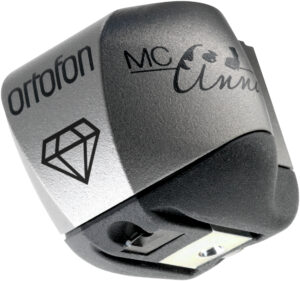

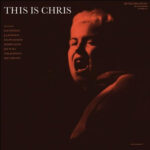
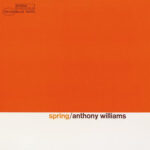
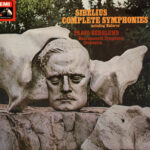
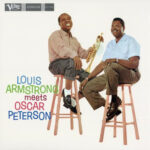
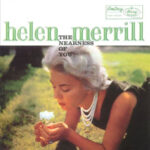
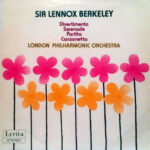
Excellent review. It is interesting that you noted the vocal forward nature of Anita O’Day’s Verve recording. Verve seemed to highlight vocalists in ensemble recordings. I have called this the “Verve Halo Effect”, as if the vocalist is dead center on the stage, with a bright spot light shining on the singer. The band is in darkness behind and around. This effect is most noticeable on many Verve/Ella Fitzgeral recordings. Regarding Mono- it takes a very good system to truly hear the benefits of mono. People are often surprised to hear a soundstage, depth and musician placement in a “mono” recording. The engineers knew what they were doing, and it took about 5yrs or so to catch up on the stereo side of things. Ortofon does make several true mono cartridges. May be worth your time to investigate.
The Demise of a God
Neither Wagner nor Shakespeare. But still Danish.
Two years ago, my official Ortofon dealer convinced me to buy an Ortofon MC Century cartridge. There was no chance to audition the cartridge, but my dealer assured me it would be a major upgrade from my Ortofon MC Anna cartridge. I have been an Ortofon fan all my life, slowly moving up the food chain of Ortofon cartridges. The investment and risk were considerable, but the MC Century would be the culmination of my lifelong loyalty to the brand. Empathy played a considerable role in the decision.
The upgrade was disappointing. The Century improved on the Anna in the lower registers but at the cost of an incisiveness reminiscent of digital playback. Detail at the cost of musicality. Over the course of the next 2 years, my dealer reset the cartridge/ arm combination a number of times, because I kept complaining that it did not deliver on its promise. To no avail.
Finally, after more than 300 hrs play-back (closer to 500 hrs by my estimation), the Century revealed its true character. At long last, the Century delivered on its promise: thunderous but always musically accurate bass, life-like mids, soaring highs and an expansive and wholly coherent sound stage.
A few months later, early January 2021, and quite suddenly, it died. The cartridge would no longer track. My dealer rushed it to Ortofon. They had long exchanges. I highlight the most notorious ones (my highlights).
Feb 12th, 2021,
The cartridge has a lot of dust that has almost cemented to the cartridge and you can also see that the cartridge has a bit of rust on the bottom.
Best regards / Med venlig hilsen
Anders Bentley
Sales Department
Feb 17th, 2021,
The diagnostics made by our operator sounds like our recommendations for stylus and record care have not been observed, and that is how it had happened. The physical condition of the cartridge doesn’t align with the story customer has told, whilst we only rely on facts.
To avoid it would happen again, I’d recommend refer to our HiFi FAQ, p.1 Stylus and record care here https://www.ortofon.com/support/support-hifi/faq-installation/, very shortly:
1. Remove dust carefully from record surfaces by using Ortofon antistatic Record brush before every use.
2. Use Ortofon Stylus fiber brush a few times along the cantilever in the direction of the stylus tip, whenever you play a new record or change sides.
Ortofon do not recommend the use of solvents of any kind for cleaning of either record surface or stylus
Best regards/Med venlig hilsen
Katarina H. Nielsen
Technical support Web Marketing
Unbelievably, these are the very words of Ortofon.
It is obvious from Bentley’s remarks that there was a serious quality control issue at Ortofon when my cartridge (nr 16) was assembled.
Rust? Rust!
Cemented dust? Cemented!
I live uphill in a cork dry climate (Greece). I religiously clean all my records in a Glass Vinyl Ultrasound Cleaner before their first spin, use a microfiber brush to remove any dust before playing, and apply a Furutech DeStat-3 before lowering the diamond into the groove. Besides, during almost 50 years of playing vinyl almost exclusively with Ortofon cartridges, I NEVER had ANY issue, let alone with either rust of cement.
Obviously, the rusted(!) part was rusted “ab initio”. And probably contaminated during manufacture with some cutting or hydraulic oil. Which in turn contaminated the cantilever and attracted/ attached the dust, which turned to “cement”. Or some variation of the above. Ortofon itself identified and recognized the problem! It sent a microscope picture illustrating the issue. But then Ortofon went Hamlet-crazy.
According to Ortofon, the condition of the cartridge does not align with the “story” (?!) customer has told. Obviously, the customer and the Ortofon-dealer connived to deliberately rust and cement the cartridge. My official Ortofon-dealer and myself are liars.
These are the “facts” and here is the “proof”: the customer uses a Glass Audiodesk Vinyl Cleaner (which uses water as a solvent, but then thoroughly dries the record). By the way, the use of any “solvent”-based record cleaner invalidates the warranty! And this, unashamedly, by the world’s leading manufacturer of cartridges!
Ortofon dismisses the self-evident explanation – its own glaring shortcoming – to go on a rant against its most loyal customers. Ortofon devises a crime involving customer and dealer. It throws credibility out of the window. A crime needs:
1. a victim: the cartridge
2. a motive: why would 2 Ortofon loyalists make up a story? One is its official dealer for 30 years, the other a loyal customer for 50 years, both with an impeccable track-record.
3. a weapon: how did the suspects manage to “rust” a cartridge? And in such short time! To cement dust to the cantilever? If the use of an ultrasonic vinyl-cleaner or other “solvent” vinyl cleaner rusts cartridges or cements dust, the WHOLE vinyl-community, incl manufacturers of all feather, should put Ortofon in its place: stop the b*s*!
4. a causality: absent motive and weapon, there is no causality.
If we apply the above fact-based reasoning to Ortofon, only one conclusion imposes itself: Ortofoon is the guilty party!
The God has fallen off his pedestal.
What would I like to achieve with this letter?
1. an apology: Ortofon has no idea how hurtful its baseless allegations are; it seems to have lost track of its mission, which is to provide musical enjoyment to its customers and revenue to its dealers. Instead, it is content to insult them.
2. a redress: Ortofon repairs or replaces the MC Century at its own cost and provides a 5-year warranty, independently of the customer’s use of a vinyl-cleaner.
3. a warning: it is impossible for a customer to check in-depth a piece of brand new HiFi when he buys it; if defects are present, they might appear with time; a customer must then rely on the reputation of the vendor for a reasonable outcome; in fact, in such cases, HiFi enthusiasts rely solely on the manufacturer’s reputation. Ortofon failed the test ignominiously. I can only hope that the vinyl-community, led by its most trustworthy opinion-makers, puts the company in its place. Otherwise, any Ortofon customer will fall prey to the company’s predatory practices. Any problem with an Ortofon Blue? Your fault: only use blue vinyl. Ortofon Ti? You “rusted” it. Ortofon Wood? You “rotted” it.
The rot is elsewhere. It is in Denmark.
Great review. The Anna D and the Atlas Lambda Sl , both are state of the art cartridges. When you get up in this range, it comes down to flavor and system matching. There are a few other excellent cartridges out there . I use the Lambda Sl into a Thrax Trajan step up transformer in my system. Incredible sound. I bet the Anna D would be outstanding also. Playing LPs, a whole lotta fun.
Fantastic review! I also have an Anna Diamond, and I wholeheartedly agree with the impressions here. I find that this really raised the limit on the capabilities of vinyl, both with dynamics (large and small) as well as with insightfulness. Crazy enough, I’m already considering a rebuild, because ever since buying this cartridge, my vinyl listening hours have gone way up (and my DAC hours, unfortunately, not as much).
First, thanks for the kind comments with respect to the review. Sometimes you wonder whether the time and effort which a good review requires is appreciated or even if the finished product will resonate with readers.
The remainder of my comments are directed to Mr. Huang: My experience with Ortofon as a company has been limited to two cartridges, The MC Anna Diamond and an earlier A-90 which I owned for over three years and sold to a friend who continues to use it in his system. With respect to the Anna, it is a phenomenal cartridge which mated well with my system after the initial 100 hours hours of break-in. With respect to the earlier version of the Lyra Atlas SL which I owned, I believe that it retrieves more low level detail and handles transients better. The Lyra on the other hand was somewhat warmer and kinder to less than perfect records. With respect to using the Anna and your comments, the Lyra stylus seemed to scour the grooves for any dirt. Even though I clean records with an Audiodesk ultrasonic cleaner and then use a second Audiodesk with laboratory grade water to rinse them, the Atlas particularly on first plays seemed to “gunk up”. This meant that I cleaned the stylus after each side. I will note that for many years I have only used the Lyra SPT cleaner which is alcohol free and which definitely improves the sound of their cartridges. With the Anna, I get much less build up and generally brushing the stylus seems to do the trick; however, I do on occasion use SPT with good results. Many years ago I did use an alcohol based cleaner which dissolved the glue on the diamond and caused it to fall off, so I do understand why the manufacturer takes the position which it does.
Finally, I have noticed that even when I am playing vinyl on a regular basis, it takes at least a side of playing for the Anna to come up to its best and if I have gone a lengthy period since listening, it may take several sides for the cartridge to sound its best. If I were you (which I am not), I might consider trying to work a deal with the folks at Ortofon to trade in the Century for an Anna Diamond. Note that it is highly unlikely that they will repair the existing cartridge and give you a five year warranty and that if we are honest may not be a reasonable expectation; however, I do hope that they will stand behind their product. I have only dealt with the US importer and he has been topnotch.
I should have been more clear, it is the Anna Diamond that is somewhat more detailed with better transients. Also, I have noticed that the body of the Anna which rides above the record has an annoying tendency to attract dust etc. almost like a magnet collecting iron filings. I would rather that any dirt collect on the body than on the stylus as it is easier to clean and suspect that this may result from electrostatic attraction.